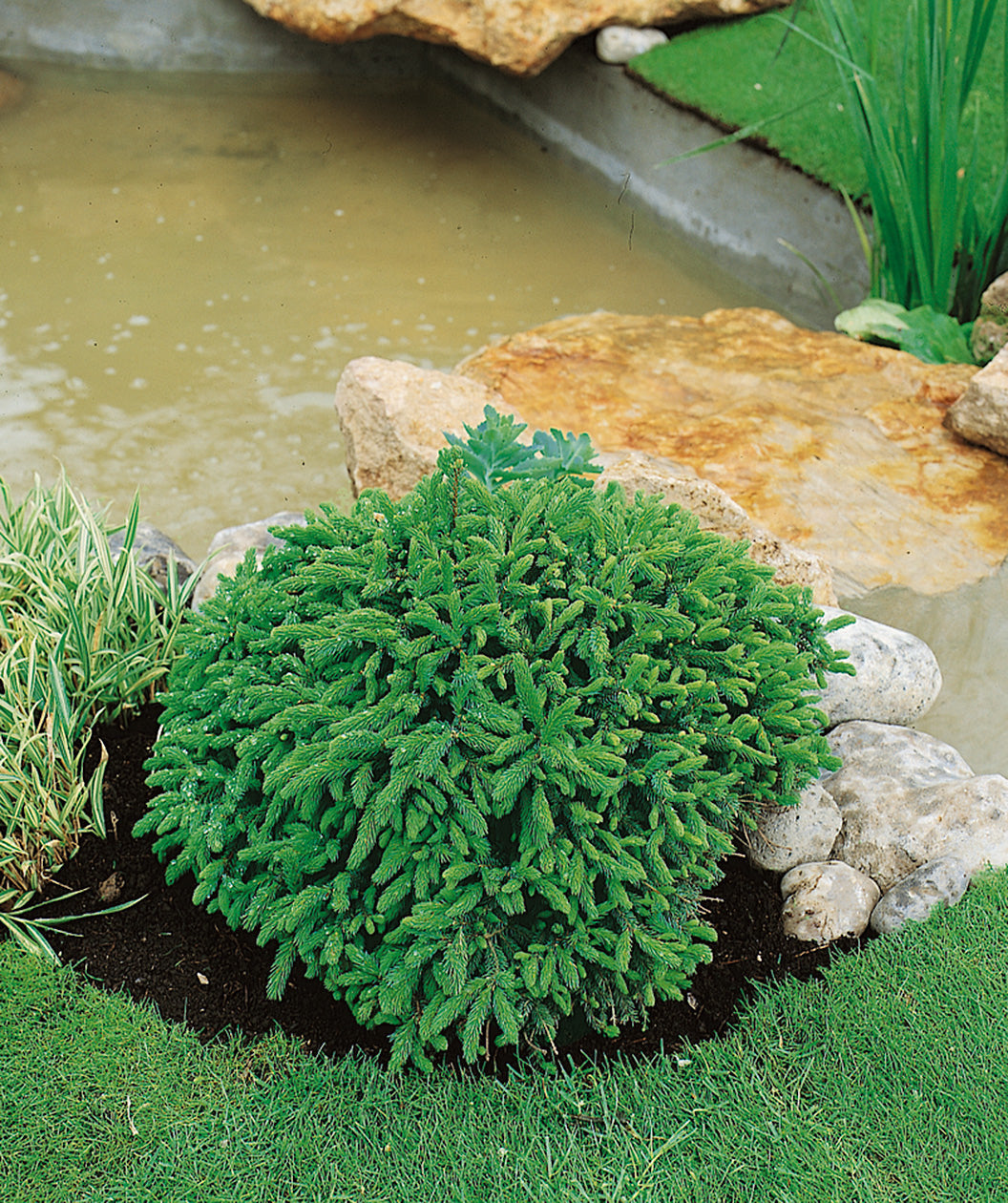

A FANTASTIC, FUN CONIFER THAT GIVES YOUR GARDEN AN INTERESTING HORIZONTAL ELEMENT
FEATURES:
- Small evergreen that has a dense, rounded, spreading growth habit with mostly horizontal branches
- The slight dip in the center of its flat top gives it the appearance of a birds nest
- Foliage has fairly light yellowish green needles that will deepen with color as they age
- Perfect for the wildlife as it provides shelter
- Hand selected fresh from our grower
- Ships in a plant-safe designed box
Growth Facts
- Hardiness Zone: 3-7
- Mature Height: 2-3' tall
- Mature Width: 4-5' wide
- Exposure: Full Sun
- Spacing: 4-5' apart
A FANTASTIC, FUN CONIFER THAT GIVES YOUR GARDEN AN INTERESTING HORIZONTAL ELEMENT
FEATURES:
- Small evergreen that has a dense, rounded, spreading growth habit with mostly horizontal branches
- The slight dip in the center of its flat top gives it the appearance of a birds nest
- Foliage has fairly light yellowish green needles that will deepen with color as they age
- Perfect for the wildlife as it provides shelter
- Hand selected fresh from our grower
- Ships in a plant-safe designed box
Growth Facts
- Hardiness Zone: 3-7
- Mature Height: 2-3' tall
- Mature Width: 4-5' wide
- Exposure: Full Sun
- Spacing: 4-5' apart
Why plant Birdsnest Spruce?
A quirky shape and evergreen needles give this beloved accent eye-appeal even during the bleakest winter days. Birdsnest Spruce really is shaped like a bird’s nest—low and spreading, complete with a dip in the middle. You may expect a hawk or an eagle to come flapping in for a landing at any moment! Its rich emerald-green foliage will please you all year, and in late spring the new growth, like little pastel pom poms, will make you smile.
Birdsnest Spruce is a mini mutant form of the Norway Spruce Tree, a towering conifer that has been a source of winter greenery in northern Europe for ages. Norway Spruce is a staple in the U.S. as well because it is so easy to grow in much of the country. This shrubby, horizontal selection appeared by chance in a German nursery way back in 1903. Sometimes small, congested growths called “witch’s brooms” appear on conifers, which can be used to produce novel forms. That’s what happened in this case, and the unique Accent has been cherished ever since.
How to use Birdsnest Spruce in the landscape?
Use Birdsnest Spruce in wide foundation beds, or plant it in front of a grove of trees to provide contrast to the vertical trunks.
Planting Zones
Hardiness Zone: 3-7
How To Plant Birdsnest Spruce
Birdsnest Spruce is a cinch to grow in many areas of the country, although it does prefer cooler summers. Frigid temperatures are no problem—it can handle winter lows to at least -40ºF. Plant this rugged Accent in full sun or very light shade. A moist, well-drained situation is ideal, but the soil doesn’t have to be great. The important thing is that it doesn’t stay soggy. Give Birdsnest Spruce plenty of room to grow. It looks cute and petite at first, but it will spread out considerably after many years. Use annuals or other short-term plants around it while it fills in.
How To Water
Water twice weekly for the first 3-5 weeks; then water weekly for the remainder of the year until winter. When you water, water slowly and thoroughly. Watering needs may be altered due to extreme weather conditions.
How To Fertilize
Incorporate Elements Starter Plant Food granular form into the soil when planting. If planting in spring or summer, start fertilizing late fall using Elements Starter Plant Food granular form on an annual basis each fall. Continue this for the first three years to get your plant well established as it gives your tree the nutrients it needs to produce lush new growth for the following spring.
How To Prune
Leave the pruners in the shed! Birdsnest Spruce is a low-maintenance Accent that needs no trimming. It grows at a slow but steady pace, naturally assuming a dense, tidy shape.




